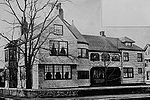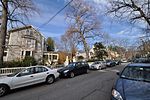Episcopal Divinity School
The Episcopal Divinity School (EDS) is a theological school in New York City that trains students for service with the Episcopal Church. It is affiliated with the Union Theological Seminary. Students who enroll in the EDS at Union Anglican studies program earn a Master of Divinity degree from Union and also fulfill requirements for ordination in the Episcopal Church. It is led by Dean Kelly Brown Douglas. Known throughout the Anglican Communion for progressive teaching and action on issues of civil rights and social justice, its faculty and students were directly involved in many of the social controversies surrounding the Episcopal Church in the latter half of the 20th century and at the start of the 21st. Until 2017, EDS was a seminary of the Episcopal Church based in Cambridge, Massachusetts, United States. As an independent seminary, EDS offered Master of Divinity (M.Div.), Master of Arts in Theological Studies (MATS), and Doctor of Ministry (D.Min.) degree programs, as well as a certificate in Anglican studies program. It had a longtime relationship with Harvard Divinity School that included cross-registration. It was a member of the Boston Theological Institute, a consortium of seminaries and divinity schools that share library and academic resources and allow cross-registration for courses. From 2010 to 2017, EDS shared part of its campus, offered cross-registration, and pooled resources with Lesley University. Established to train people for ordination in the Episcopal Church, the seminary also trained students from other denominations; since 2011, members of the Metropolitan Community Church could train for ordination in their church, receiving specific instruction on their church's polity.
Excerpt from the Wikipedia article Episcopal Divinity School (License: CC BY-SA 3.0, Authors).Episcopal Divinity School
Brattle Street, Cambridge
Geographical coordinates (GPS) Address Nearby Places Show on map
Geographical coordinates (GPS)
| Latitude | Longitude |
|---|---|
| N 42.377569444444 ° | E -71.125402777778 ° |
Address
Lesley University Brattle Campus
Brattle Street
02163 Cambridge
Massachusetts, United States
Open on Google Maps











